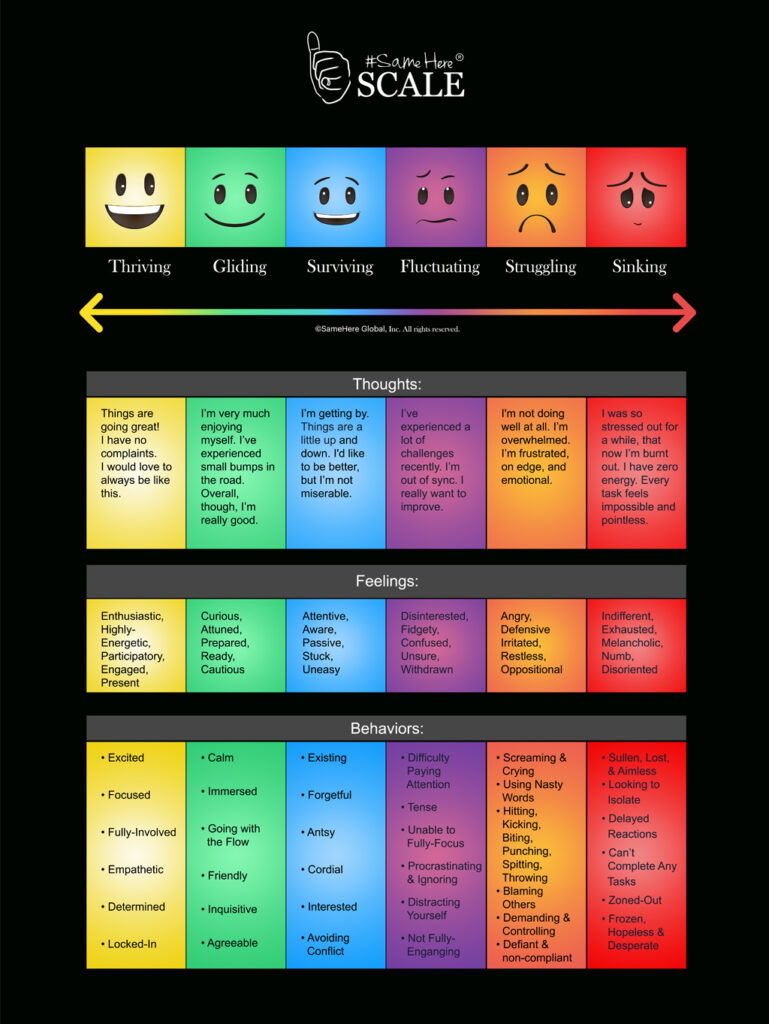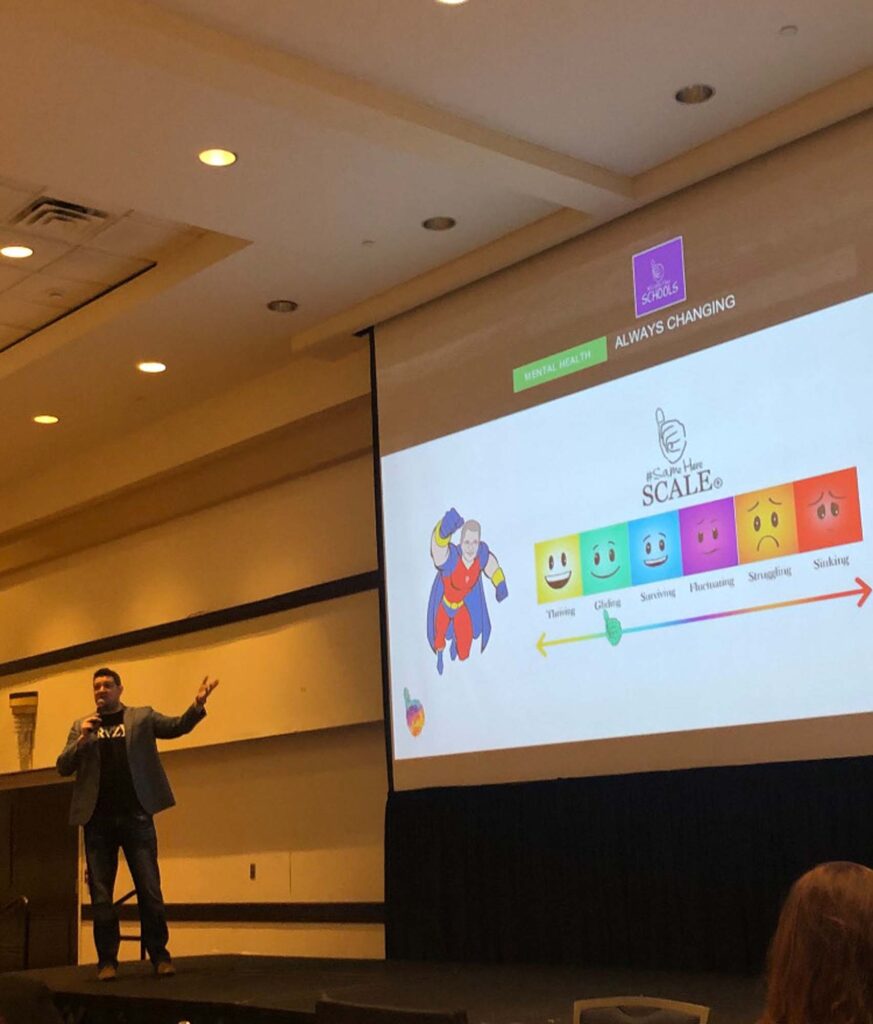Scale Guide
Mental Health Lives On A “Continuum” or “Scale”
#SameHere Scale
Use The #SameHere Scale For An Evidence-Based Common Language Check-In And Tracking Tool In Your Classrooms, Offices, Playing Fields and More:
The Practitioners and Members of #SameHere’s Global Alliance champion the reality – that mental health is not binary. There is no “healthy” group of the population, vs a “sick group with disorders.” Instead, everyone’s mental health lives on a “continuum,” or in simpler words, a “Scale” that stretches from “Thriving” to “Sinking,” (depicted below). This Scale, developed by #SameHere Global, is based on a science called “Polyvagal,” that explains shifts in the health and balance of our nervous system (the balance between our parasympathetic “rest & digest,” and sympathetic “stress,” nervous system responses).
The “Thoughts, Feelings, & Behaviors” guideposts underneath each spot on the SameHere Scale, aligning with specific nervous system states, have been part of ongoing research and surveys conducted by data scientists and PhD’s out of Baylor University. The SameHere Scale has also been officially certified by The American Institute of Stress. Everyone in the world’s nervous system (and ultimately mental health) lives and moves on a continuum (or Scale), at different points in their lives (or even their days, weeks, months, etc.). Have a look below and see where you might find yourself at this moment.

Factors that contribute to where one is at on the Scale at any given point in time include: Genetic Predispositions, Life Experiences, Physical Traumas, Environment, and Lifestyle, all of which impact our nervous system’s balance and “psychological flexibility.” This psychological flexibility means – the ability to go from a place “on the right” of the Scale (more dominant sympathetic responses, like “Fluctuating” and “Struggling”), back to places on the left (more dominant parasympathetic responses, like “Surviving,” “Gliding,” and “Thriving”). So, say you have a traumatic Life Experience, like the loss of a loved one – it would be expected you would spend some amount of time “to the right” – “Fluctuating, or “Struggling.” But with time and healing, your “psychological flexibility” allows you to move back “to the left” on this Scale.
There are some of us with a greater genetic susceptibility to nervous system dysregulation (becoming “inflexible” and staying further to the right on the Scale with greater “sympathetic” nervous system activation) and ultimately symptoms that are referred to by many as disorder(s)). That being said, it appears as though regardless of our genetics, the challenges that we will all face throughout our lives, as well as how we treat ourselves, make it so that we are all at risk of slipping into the: “Fluctuating” and “Struggling” portions of the Scale for weeks or more. And, if we don’t take care of ourselves and we become “inflexible,” there may be too high of a sympathetic response for too long, and we are susceptible to falling into a “freeze” state of our nervous system that we call “Sinking” on this Scale. Think of this as too many programs open on your computer or phone at once, and it “freezing” because it is becoming overwhelmed.


Our mental health is therefore cumulative (just like physical health and plaque building in our arteries), and we can monitor how that “sympathetic nervous system response” builds over time, with this Scale, how we become inflexible and how that even leads to that “Sinking” spot. The key is to understand that any of the above factors can manifest all the way to “dysregulation” and “inflexibility,” and that we must know what thoughts, feelings, and behaviors (like you see in the chart above) to look out for throughout our lives. We must even be proactive so there is less of a chance for us to develop mental health complications when we stay “to the right” on this Scale for long periods of time.
To check out exercises and modalities that move you “to the left” on the Scale, more consistently, check out the #SameHere Alliances tab, and the STARR Experts for all that they recommend. You can even get STARR Exercise Cards for your home or office.
